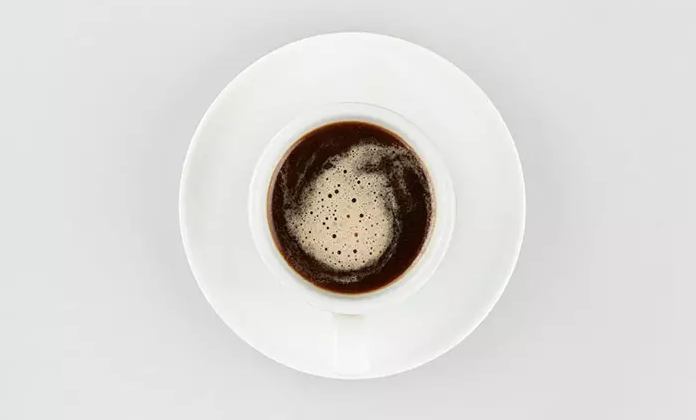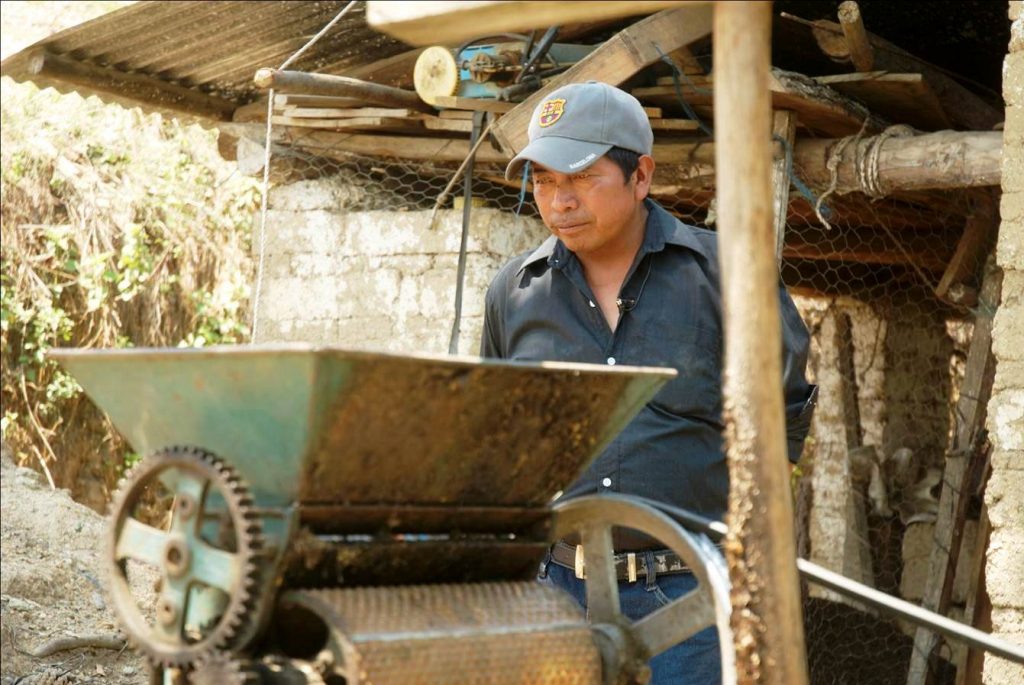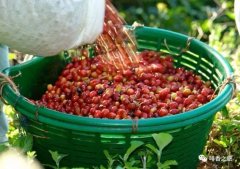Home-baked coffee fresh coffee comes from the boutique of Vivette Nan fruit in Guatemala Guatemala
Guatemala Vivette Nanguo (Huehuetenango)
The Republic of Guatemala (Spanish: Rep ú blica de Guatemala), translated as Guatemala, is a country of Central America, located in the south of the North American continent. It borders the Pacific Ocean to the west, the Caribbean Sea to the east, Mexico to the north, Belize to the northeast, and Honduras and El Salvador to the southeast.
Located in the tropics, the northern and eastern coastal plains have a tropical rain forest climate, and the southern mountains have a subtropical climate. The year is divided into two dry and wet seasons, with wet seasons from May to October and dry seasons from November to April of the following year. The annual precipitation is 2000-3000 mm in the northeast and 500-1000 mm in the south. The forest accounts for half of the country's area and is the location of the best latitude for coffee production. Because coffee is an important cash crop in the area, it has given rise to a rich coffee culture. People drink coffee every day. Most people have a cup of coffee for lunch.
Vivetna fruit is an important coffee producing area in Guatemala. Compared with Antigua, Vivetnam fruit has a more aromatic, clear fruit flavor (fruity flavors) and refreshing flavor. Due to the high altitude, the coffee beans are of better quality, rich taste and full grains, which are favored by the European royal family. Guatemala is a coffee bean familiar to the Japanese. The classification is divided into seven grades according to the elevation. Coffee beans produced in highlands (SHB / 4500 feet above) are more mellow, while coffee beans produced in lowlands are of lower quality.
Compared with the baked Vivetta Nanguo, the granules are very full, although there is no strong chocolate aroma of Yunnan beans in the baked hour, but also exudes a hint of cookie aroma (as I describe it). Because I was constantly adjusting the throttle during baking, the smoky smell didn't show up. It can only show the faint smell of cookies.
Guatemala Vivette Nanguo Palhu SHB EP
San Pedro Necta is a city in the Huehuetenango region of Guatemala, sometimes referred to as Huehue, abbreviated as HHT, which can be said to be one of the most famous coffee producing areas in Guatemala. The altitude of this area is high, because the temperature is lower, the harvest season is relatively late, but the coffee quality is better. The region borders Mexico's Chiapas region and is more remote and inconvenient than other coffee-producing areas in Guatemala, such as Acatenango and Antigua.
The coffee comes from La Providencia Farm and is owned and managed by Maximiliano Palacios, the third-generation owner of the farm. At the heart of the La Providencia farm is a processing plant set on a high slope where the coffee fruit is placed in the water and transported down by gravity for peeling and further processing. When I got the beans, they were marked with Palhu, the initials of the farmer's last name and the initials Pal+Hu of Vivette Nango.
Maxamiliano is a passionate man who is interested not only in his own coffee, but also in all the coffee beans in the region. He calls coffee "the blood of Vivetta Nango". We also felt his enthusiasm. The balanced acidity and supple sweetness of this coffee brighten our eyes.
Green Analysis by Chris Kornman
Raw bean analysis
This is a typical blend of American coffee beans, including Bourbon, Kaddura, Catua í and Mundo Novo. Bourbon is the source of many coffee varieties today and was first found on the island of Reunion. When it was brought to America, its characteristics also changed. The hybrid variety Kaddura, which was first successfully planted in Brazil, has a shorter tree body and strong resistance to wind and rain. Another variety is New World, which is a hybrid of Bourbon and Typica. Finally, there is Kaduai, a hybrid of the New World variety and Kaddura. The tree is short and chubby, and the yield is extremely high after proper fertilization.
Although leaf rust has ravaged the entire Central American coffee producing area, none of these varieties contain any genes from the Robusta variety, which is now more common than the Timor variety. But that's why the coffee tastes better here, and we've seen the region recover from what it used to be.
This batch of coffee is handled in accordance with European standards. Palhu has a high density of beans through a precise drying process. I believe that proper preservation can make this bean show a better flavor after baking.
Roast Analysis by Jen Apodaca
Baking analysis
It's fun to bake these beans from Guatemala. We have baked a total of two batches, both of which are very delicious, demonstrating the quality of this coffee. By adjusting the firepower, the overall baking time of the first batch is one minute shorter than that of the second, while the dehydration time is slightly longer than that of the second. In this way, the time of Mena reaction and explosion is relatively short, making the fruit acid prominent. In the second batch of baking, I increased the baking time as a whole, but shortened the dehydration time and increased the firepower 32 seconds earlier, resulting in a longer Mena reaction and bursting time.
The first batch of Roast one: Apple, pear, papaya, peach, caramel
The second batch of Roast two: Maple syrup, flower scent, honey, vanilla
Brew Analysis by Chris Kornman
Brewing and cooking
We use Bonavita Brewers to brew this Guatemalan. Brewing and cup testing are carried out at the same time. The people who took part in the test basically agreed and preferred the first batch of baked goods, that is, batch PR-644. The first batch of baking scored slightly higher, with sweet tangerine and light floral aromas, while the second batch highlighted the sweetness and mellow thickness of fudge.

Important Notice :
前街咖啡 FrontStreet Coffee has moved to new addredd:
FrontStreet Coffee Address: 315,Donghua East Road,GuangZhou
Tel:020 38364473
- Prev

Raw bean file coffee raw bean analysis Guatemala Vivette Nan fruit Palhu SHB EP
Palhu SHB EP San Pedro Necta is a city in the Huehuetenango region of Guatemala, sometimes referred to as Huehue, abbreviated as Vivette, which can be said to be one of the most famous coffee producing areas in Guatemala. This area is high above sea level because the temperature is low and the harvest season is relatively low.
- Next

Certified by Sasa to produce beans in El Salvador, India, Nadi, Rwanda, Ngoma, Panama, Tang Pepe Manor
Finland used to be the most coffee-consuming country in the world, but now Australia, no doubt, is the leader in the third wave of boutique coffee. Sasa Sestic, champion of the 2015 World baristas Competition, has created a source program in the past three years to find and help farmers improve their planting in the world's coffee-producing countries for a cup of coffee that everyone can afford and drink.
Related
- Detailed explanation of Jadeite planting Land in Panamanian Jadeite Manor introduction to the grading system of Jadeite competitive bidding, Red bid, Green bid and Rose Summer
- Story of Coffee planting in Brenka region of Costa Rica Stonehenge Manor anaerobic heavy honey treatment of flavor mouth
- What's on the barrel of Blue Mountain Coffee beans?
- Can American coffee also pull flowers? How to use hot American style to pull out a good-looking pattern?
- Can you make a cold extract with coffee beans? What is the right proportion for cold-extracted coffee formula?
- Indonesian PWN Gold Mandrine Coffee Origin Features Flavor How to Chong? Mandolin coffee is American.
- A brief introduction to the flavor characteristics of Brazilian yellow bourbon coffee beans
- What is the effect of different water quality on the flavor of cold-extracted coffee? What kind of water is best for brewing coffee?
- Why do you think of Rose Summer whenever you mention Panamanian coffee?
- Introduction to the characteristics of authentic blue mountain coffee bean producing areas? What is the CIB Coffee Authority in Jamaica?

